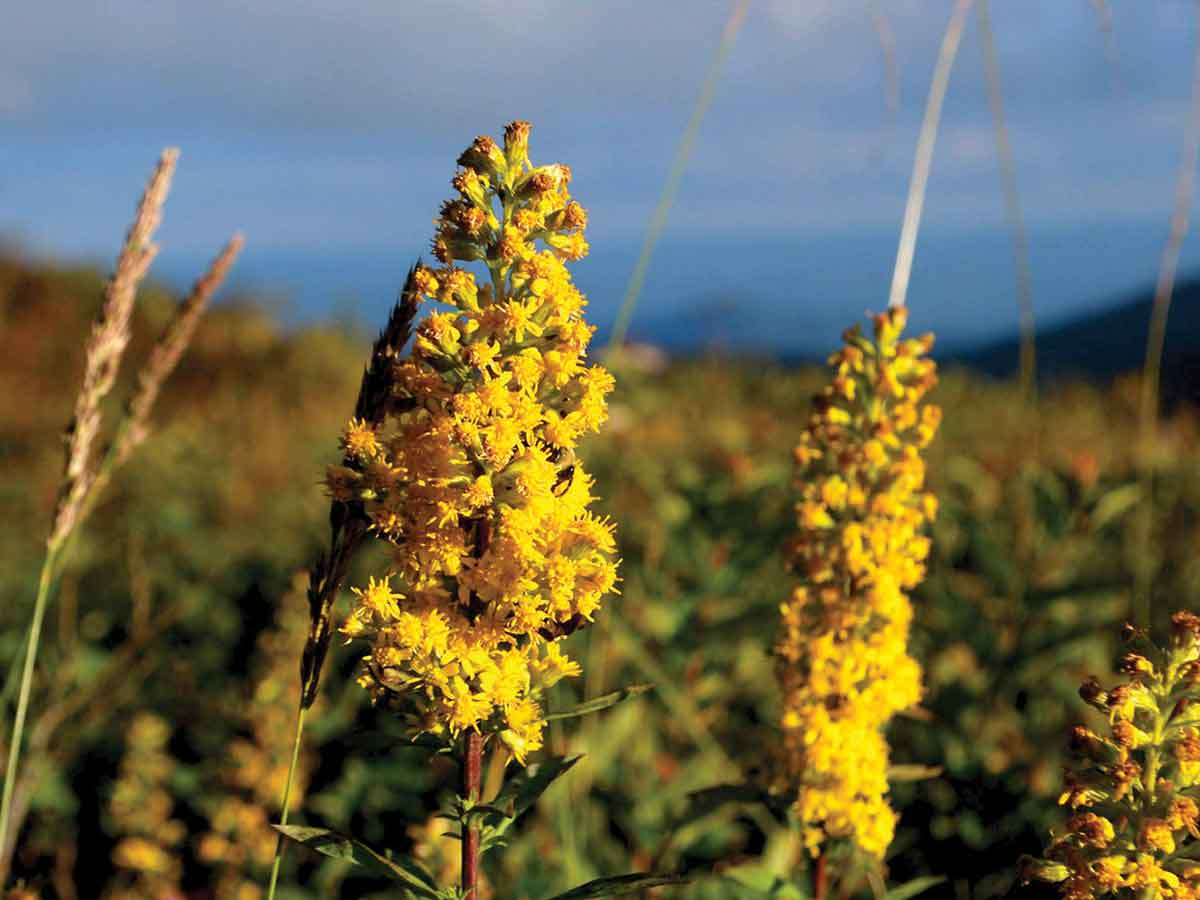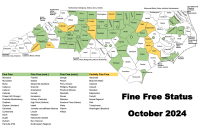Notes from a plant nerd: There’s goldenrod on them there hills
 Goldenrod flowers bloom beneath autumn skies. Adam Bigelow photo
Goldenrod flowers bloom beneath autumn skies. Adam Bigelow photo
Goldenrods (Solidago spp.) are among the most widespread, beautiful and important wildflowers in all of Southern Appalachia. There is almost nothing more beautiful than a field of goldenrod in bloom, with a crisp, blue, autumn sky as backdrop. And often they are growing with ironweed (Vernonia spp.) and Asters (Symphiotrichum spp.), creating that beautiful purple and gold color combination that dominates late summer wildflowers.
There are so many kinds of goldenrod that bloom from summer into fall, that it can be very difficult to tell them apart. Over 70 species of goldenrod are found in North Carolina, with most of those growing in these mountains. There are goldenrod species that grow in full sun and in full shade, from the highest mountain ridgetops to the lowest valleys and riverplains.
In addition to their golden yellow flowers, one thing all goldenrods seem to share in common is being wrongly demonized by many who suffer fall seasonal allergies. I have sympathy for those of you who do, even though I am not among the afflicted. People’s eyes start watering, their nose is running, they’re coughing and sneezing, and then they look around for something to blame. And there is goldenrod blooming everywhere you look. So out come the weedeaters, and out come the herbicides. We kill goldenrod indiscriminately.
But goldenrod gets a bad rap, for its pollen is too large and heavy to fly in the air. So, the only way it could get into your nose to cause your histamine reaction would be if you cut a flower stalk and shoved it up in there. I don’t recommend that you do that, for goldenrod is so popular with pollinating insects that you might just get a wasp in there with it. And that would definitely cause a reaction.
It has been known for a long time that goldenrod doesn’t contribute to fall seasonal allergies, and rather that it’s ragweed (Ambrosia spp.) that gets you sneezing. Yet, if you look at TV commercials for allergy medications, you’ll notice subtle yellow flowers in the background. There are even pictures of goldenrod on the store-brand allergy medicine packaging. And here’s where things get interesting, for not only is goldenrod not causing your fall allergies, but a tea made from the blooms of goldenrod relieve the very symptoms they are blamed for.
Among the many reasons to encourage goldenrods to bloom in your landscape is their incredible contribution to supporting wildlife, especially moths and butterflies, and the birds and other animals that depend on their caterpillars for food. See, plants eat sunlight (aka photosynthesis) and insects like caterpillars eat plant leaves, helping to move solar energy up and into the ecosystem. This is a primary foundation of the food web that all of life is dependent on.
Related Items
Goldenrods can support up to 116 species of moth and butterfly, who lay their eggs on the goldenrod leaves, knowing them to be a great food source for the caterpillars who soon hatch out. These caterpillars are the primary food source for nesting songbirds, some of whom require 5,000 caterpillars to raise a clutch of baby birds, making some 1,500 trips a day to gather food for their young. Could you imagine going to the cupboard 1,500 times a day to feed your kids?
So, please don’t mow down all the goldenrods growing around you. The baby birds really need them. And so do I.
(Adam Bigelow lives in Cullowhee and leads weekly wildflower walks and ecotours through Bigelow’s Botanical Excursions. This email address is being protected from spambots. You need JavaScript enabled to view it..)









